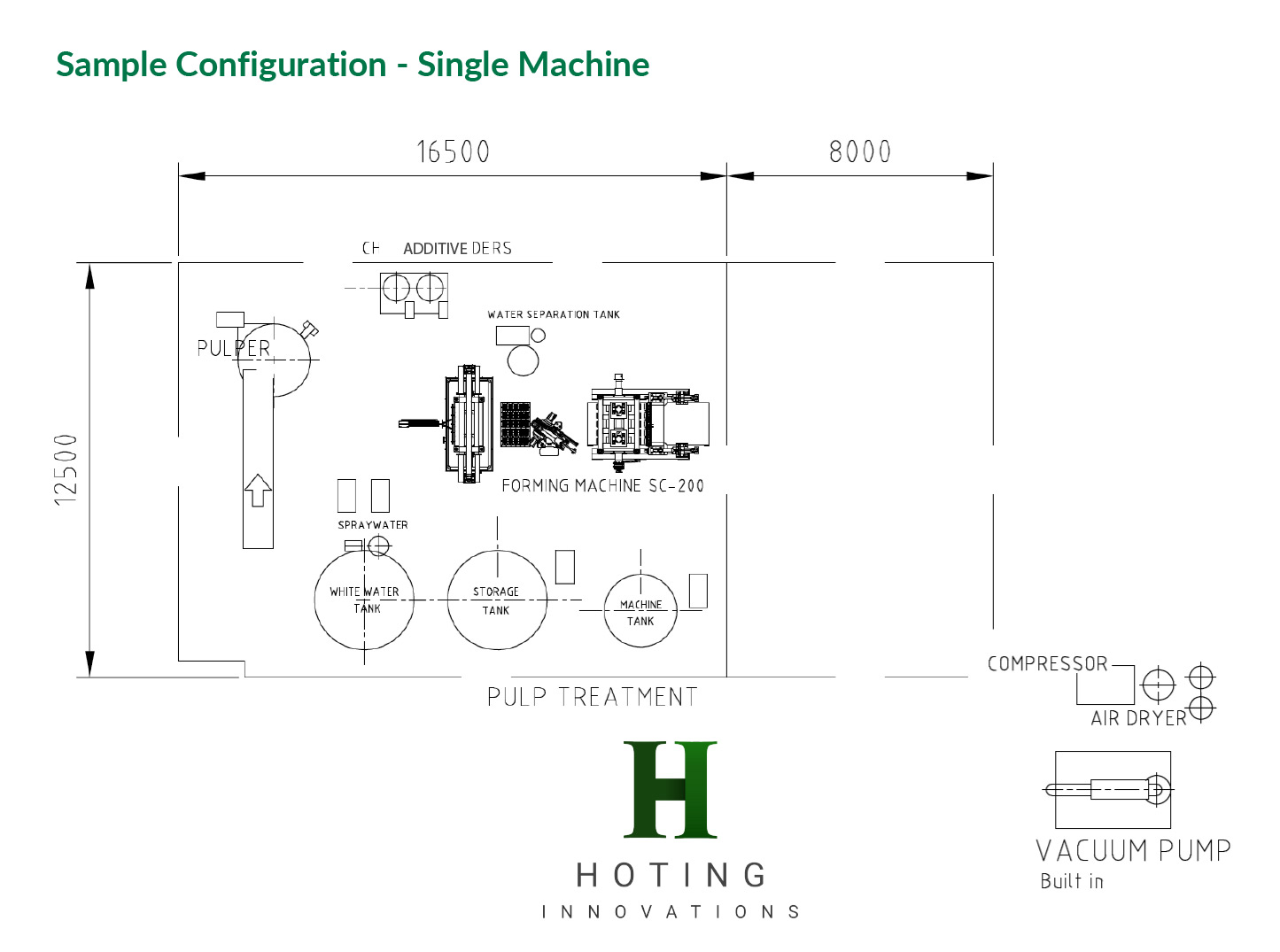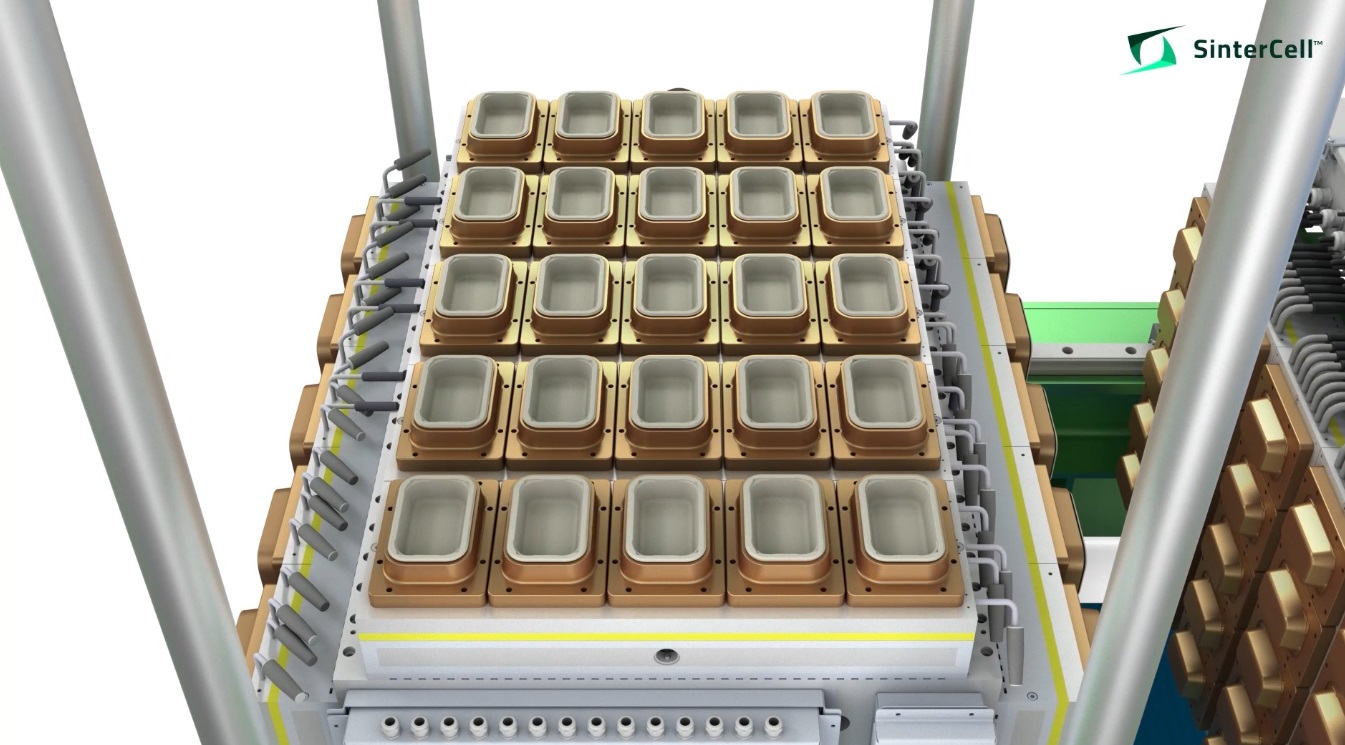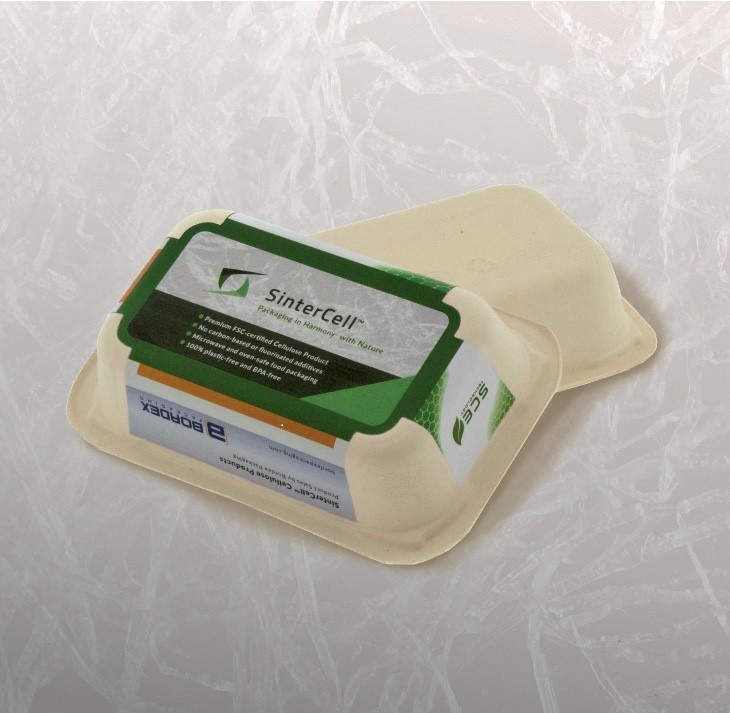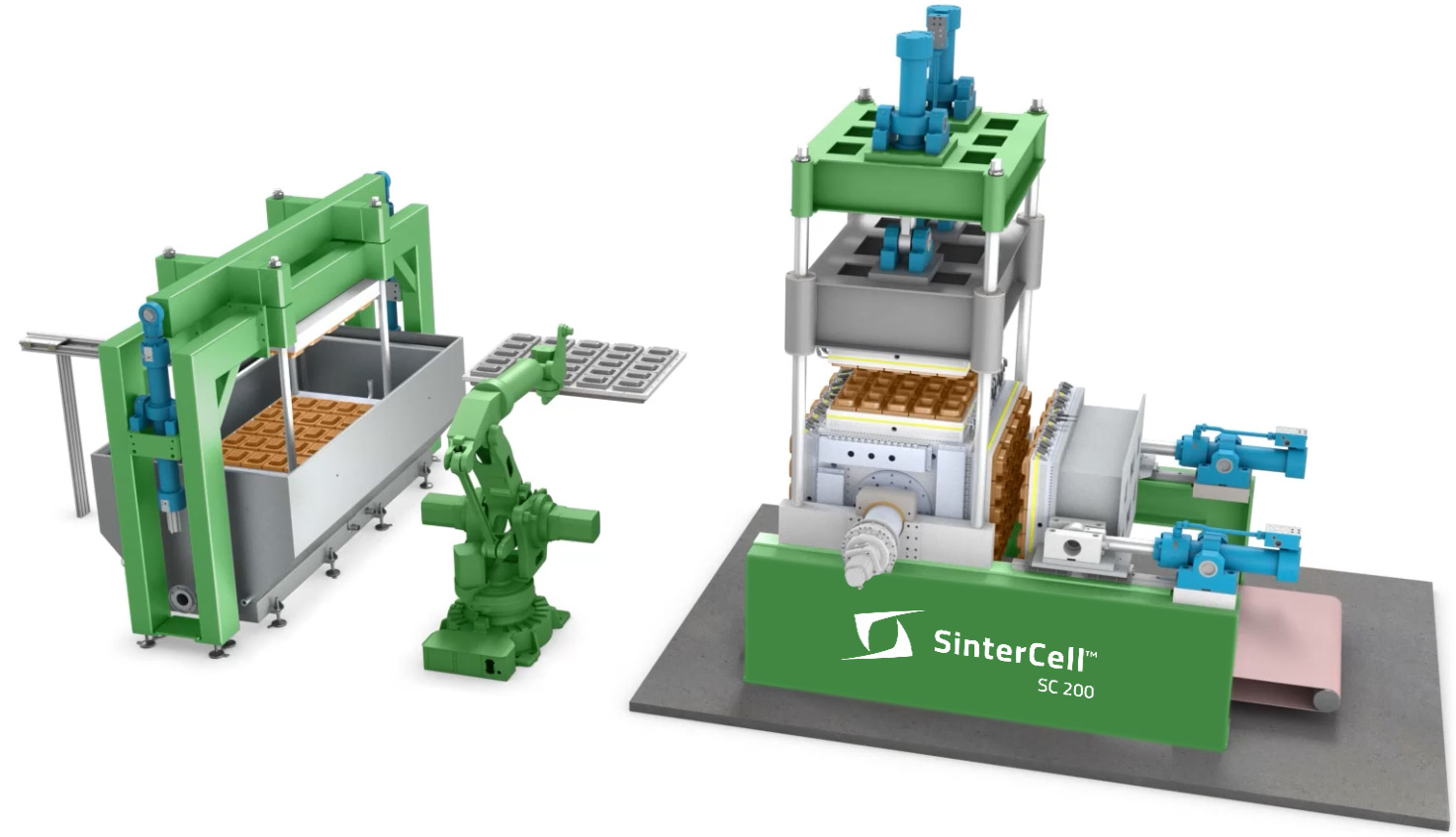


"*" indicates required fields

Packaging in Harmony with Nature
The SinterCell™ 200 is a second-generation wet-fiber molding machine that achieves unprecedented productivity through innovative engineering, proprietary tooling design, and intelligent control system technologies.
The intelligent control system is the “brain” that optimizes each part of the SinterCell™ 200 fiber forming process and the process flow, ensuring fast production with high and consistent quality. Thereby eliminating any guesswork and tinkering needed for optimal performance.
The system enables the fiber-forming process to forge superior hydrogen bonds between the cellulose fibers by rapidly removing free-moving water particles under high heat and high pressure without destroying the important properties of the cellulose.


Through innovative engineering, proprietary tooling design, and intelligent control system technologies, the SinterCell™ 200, a second-generation wet-fiber molding machine, achieves unprecedented productivity.
Reference Product: SC – A13 Tray, dimensions 108(w) – 162 (l) – 36(h) mm
| Attribute | Description |
|---|---|
| Surface area | • Pulp Forming Unit: 1529(w) – 3510(l) – 2357(h) mm • Rotational Press Unit: 3500(w) -2900(l)- 3885(h) mm • Tool Plate Forming Area: 830 mm x 1300 mm |
| Installed Power | • 350 kW |
| Average Power Consumption¹ | • 180 kW |
| Maximum Product Height | • 120 mm |
| Recommended Material of Production | • BCTMP 400 CSF |
Reference Product: SC – A13 Tray, dimensions 108(w) – 162 (l) – 36(h) mm
| Attribute | Description |
|---|---|
| Productivity Speeds | • 4500 to 5625 pieces per hour • 16 to 20 seconds per cycle |
| Power Consumption¹ | • 3,760 to 4,660 kWh per 1000 kg of pulp |
| Pulp/Water Concentration | • 0.5% to 0.9% |
| Process Steps | 1. Forming 2. Hot Press Drying |
| After-Press Average Product Humidity | • 5% to 10% |
| Product Weight | • 12 to 14 grams |
| Wall Thickness | • 0.7 to 1.0 mm |
| Minimum Wall Angle | • Heights over 30 mm: 11 degrees • Heights under 30 mm: 7 degrees |
| Maximum Press Force | • 40 tons |
| Heat Utilization | • Up to 230°C on tool surface ~ 120°C on tools in rotating box |
Designed for easy cleaning and low downtime for maintenance and tool changes.

| Compressed Air | • Air quality SS-ISO 8573-1 |
| Volume | • 70 liter/second oil free pressure: 7 bars |
| Electrical Power | • Installed: 350 kW • Production: 180 kW |
| Power Supply | • 3 x 400 VAC/N/PE/50Hz |
| Water Supply | • Quality, soft water 2°-5° German hardness flow |
| Ventilation | • No additional ventilation required in industrial facilities |
| Components | Description |
|---|---|
| Pulp Forming Unit | The pulp-forming unit consists of the forming tank and forming tools used to mold the cellulose into its 3D shape. |
| Robotic Transport Arm | Robotic transport arm is used to move units from the forming unit to the rotational press unit. The robotic arm can be configured to service two forming tanks to one rotational press unit or two rotational press units from one forming tank. |
| Rotational Press Unit | Proprietary toolsets run on a rotational basis to calibrate the heat, pressure and steam extraction to create a signature SinterCell hydrogen cellulose bond. |
| Toolsets | Tools are exclusively manufactured by Hoting Innovation according to design and end-product specifications defined in consultation with the customer. |
| Intelligent Control System | A Control system for logging production data and recipe handling provides the means for supervisory control and data acquisition via automation software. |
| Optional Components | |
| After Treatment Unit | Addresses the various after treatment needs inclusive but not limited to; the robotic pick and place system together with quality control camera, printing, and lamination stations. |
| Crane | To expedite tool plate changeover. |
| Quality Monitoring System | Programmable system to monitor production output. |